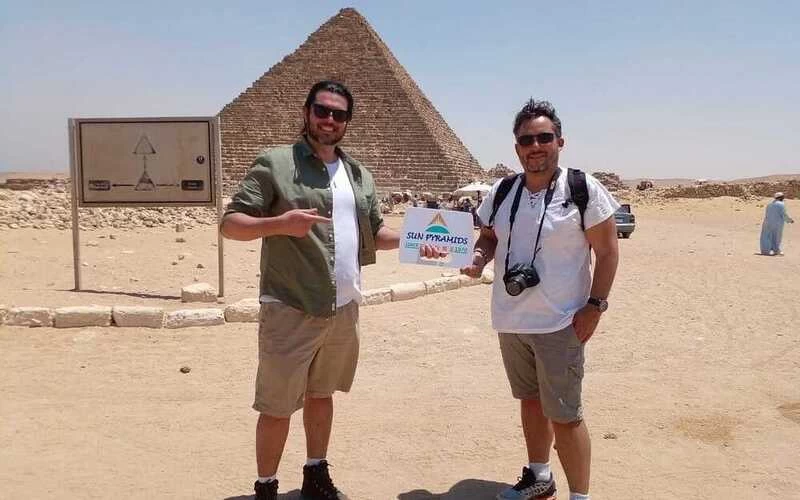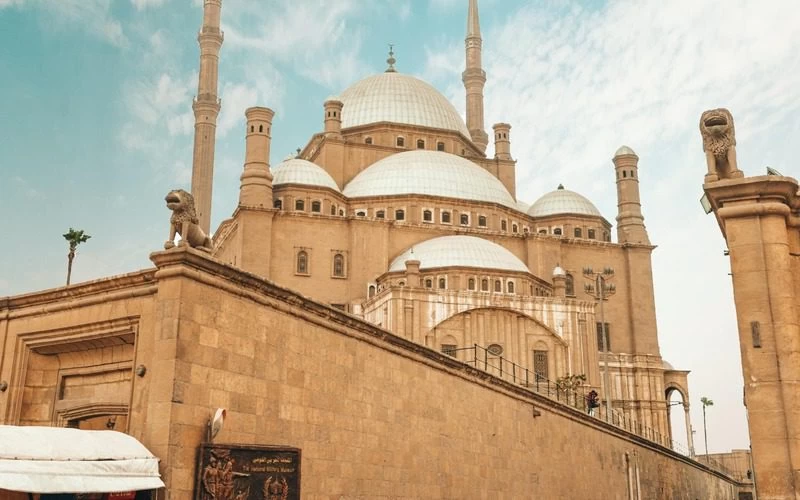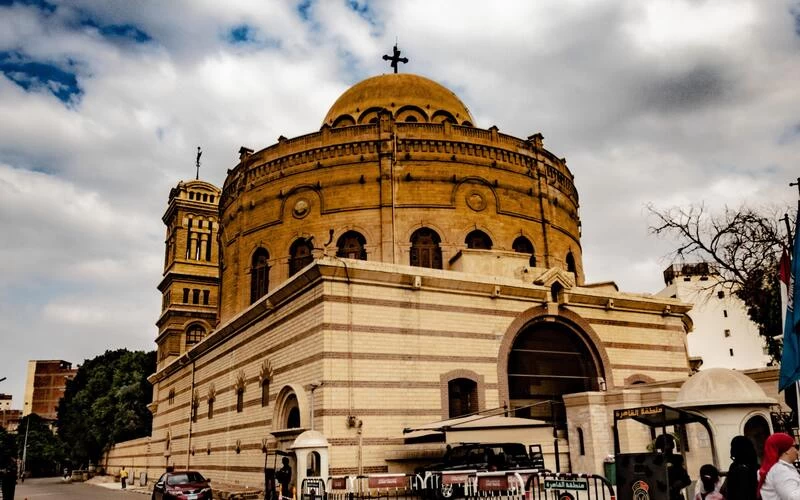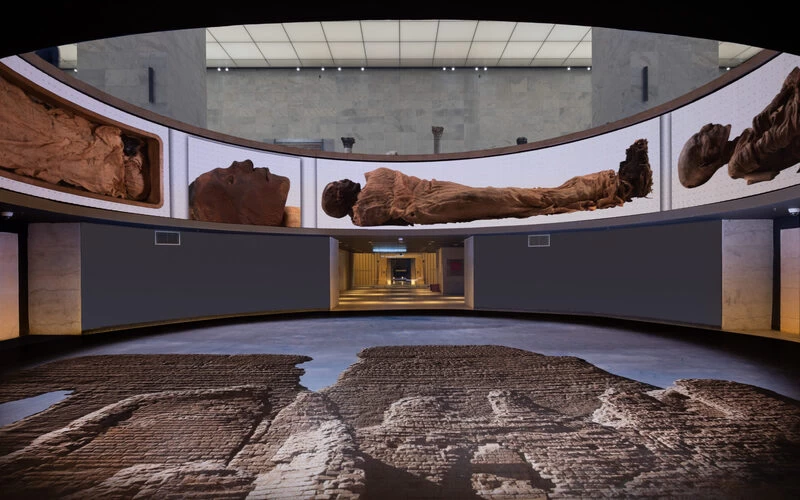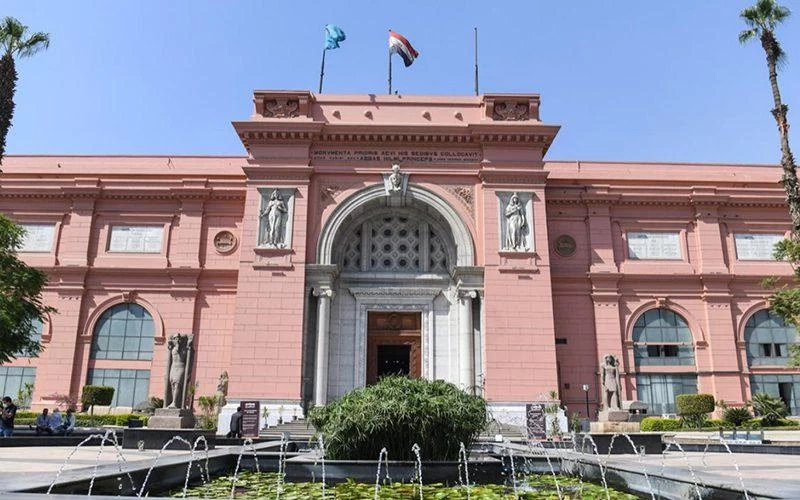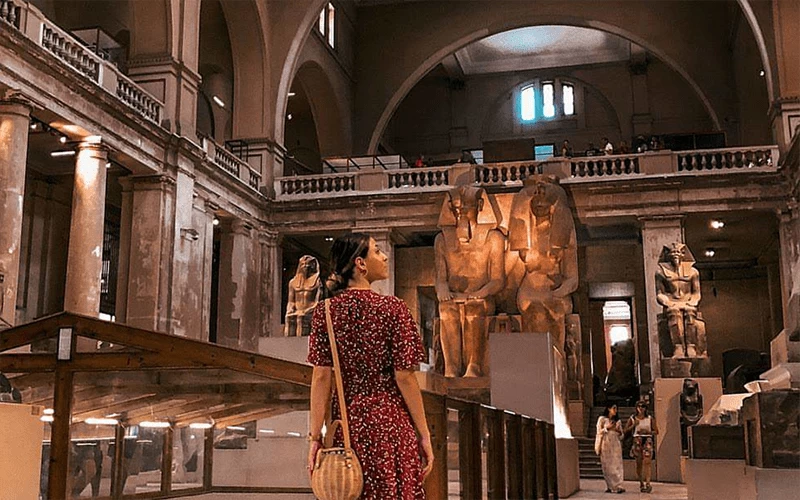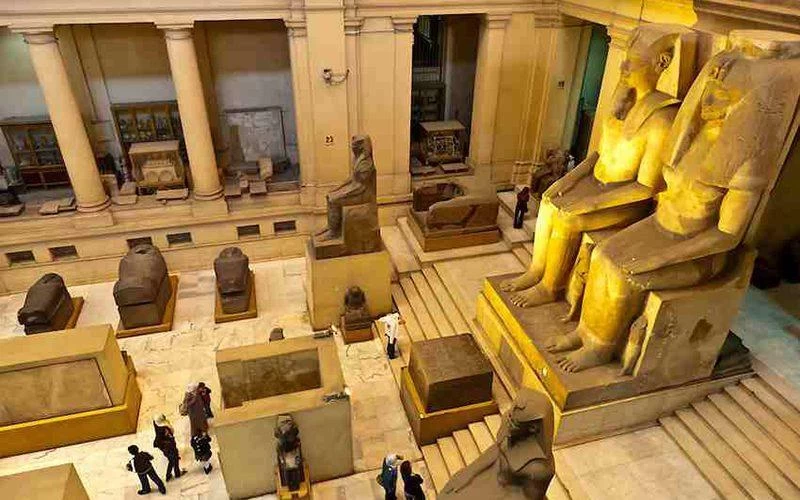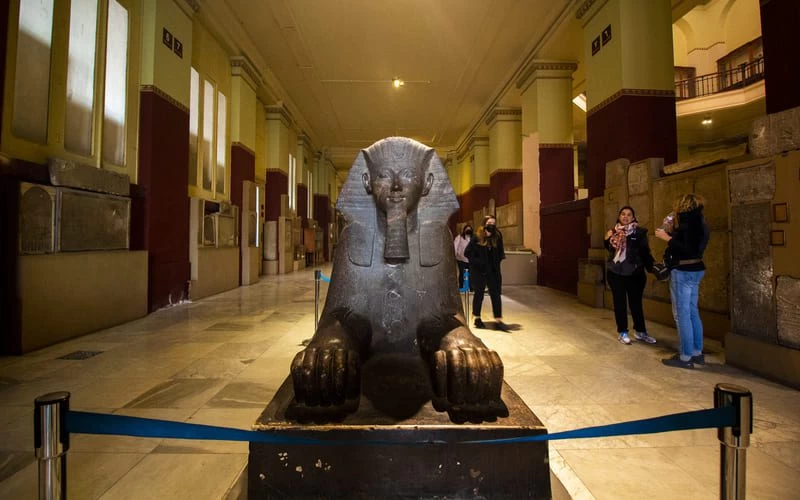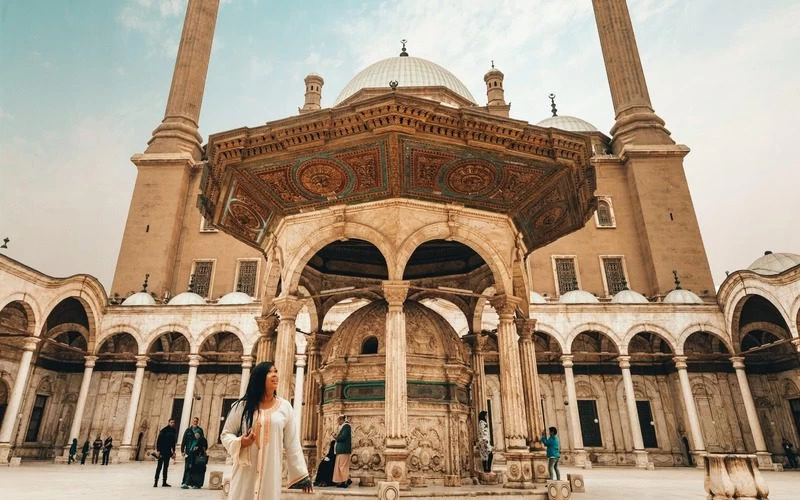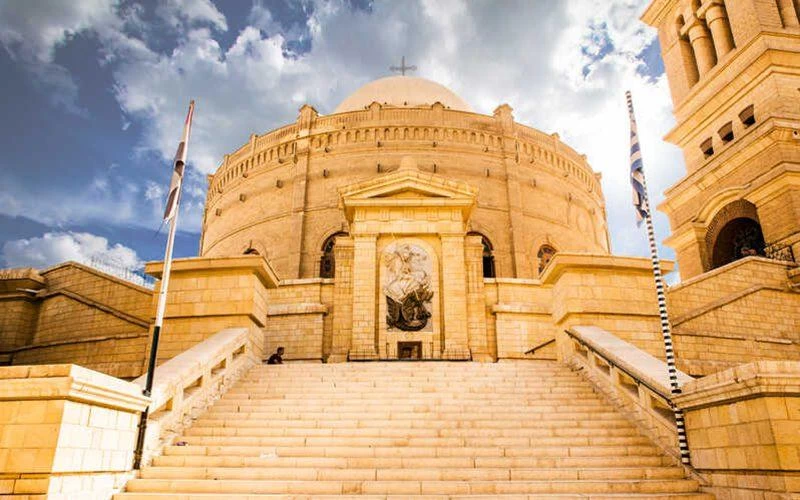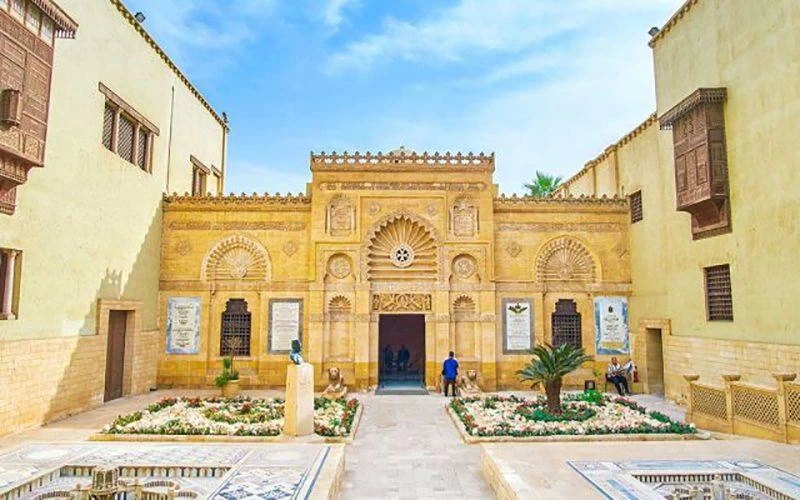Table of Content
The Golden Mask Of Tutankhamun
The Palette Of Narmer
The Enlightening Rosetta Stone
The Dendera zodiac
The Nefertiti Bust
Sakkara's Serapeum sarcophaguses
Canopic jar
The Nubian Egg
The Sabu Disk
The Statue Of Khafre
Ancient Egyptian Artifacts
Ancient Egyptian Artifacts
Egypt, a land steeped in history and culture, is a treasure trove of awe-inspiring artifacts. Each artifact, from Tutankhamun's golden mask to the mysterious Sabu Disk, tells a tale of a time long past, yet their allure remains uncompromised.
With Sun Pyramids Tours, embark on a mesmerizing journey through the annals of the Ancient Egyptian civilization. Uncover the Palette of Narmer, a testament to Egypt's rich heritage, and solve the Enlightening Rosetta Stone, a key to the mysteries of hieroglyphics.
Marvel at the sculptured Dendera zodiac, a celestial map from antiquity, and the Nefertiti Bust, a symbol of mesmerizing beauty. Explore Sakkara's Serapeum sarcophaguses, a testament to architectural prowess, and the enigmatic Nubian Egg, a relic shrouded in mystery.
Stand in the shadow of the statue of Khafre, a monument to the grandeur of pharaohs. These treasures, each a testament to Egypt's millennia-old civilization, invite you to explore, discover, and connect with the past.
Join us at Sun Pyramids Tours as we unveil the captivating ancient Egyptian artifacts, each echoing the awesomeness, beauty, and mystery of this timeless civilization.
The Golden Mask Of Tutankhamun
This iconic funerary death mask, belonging to the young Pharaoh King Tutankhamun of the 18th dynasty (1332-1323 BC) and one of the most renowned and esteemed historical treasures of Ancient Egypt, captivates with its detailed craftsmanship. Weighing in at 11kg (24p) of solid gold, the mask is adorned with blue glass, lapis lazuli, and a variety of semiprecious stones, reflecting the luxury of the era. Unearthed by Howard Carter in 1922, it offers a realistic glimpse into the visage of the boy king. Today, it is now located at the Grand Egyptian Museum, waiting to share its story with you.
The Palette Of Narmer
Journey back in time with Sun Pyramids Tours to the 31st century BC, where the Palette of Narmer, one of the world's earliest historical documents, awaits. This unique artifact, a 23-inch dark green schist stone, is intricately carved into a shield-shaped ceremonial tablet. It portrays King Narmer's ascension and his victorious unification of Upper and Lower Egypt.
The palette, decorated with some of the rarest hieroglyphic engravings, is a testament to the rich history and culture of Ancient Egypt. Today, it resides in the Grand Egyptian Museum, with replicas housed in the Royal Ontario Museum in Toronto, Canada.
The Enlightening Rosetta Stone
A significant artifact dating back to the reign of Pharaoh Ptolemy V. This irregularly shaped stone, signed with the law that established the right of kingship, is a marvel of ancient script. It contains fragments of passages written in three distinct scripts - Greek, Egyptian Hieroglyphics, and Egyptian Demotic, all conveying the same meaning. This remarkable trilingual inscription was instrumental in deciphering the enigma of hieroglyphics in 1822 AD, illuminating their meaning for the first time in 2000 years. Discovered in 1799 in the town of Rosetta, about 65 km east of Alexandria, during Napoleon Bonaparte’s Egyptian campaign, it was a French soldier who first noticed the black basalt slab inscribed with ancient writings. Today, the Rosetta Stone is housed in the British Museum, a testament to the enduring legacy of Ancient Egypt.
The Dendera zodiac
This remarkable artifact features a celestial map, complete with zodiac signs and symbols representing the 360 days of the ancient Egyptian calendar. Wonderfully carved sandstone slab of Dendera, initially located in the chapel of Osiris at the Hathor Temple complex in Dendera.
In 1820, this historical treasure embarked on a new journey, being relocated to Paris and now residing in the Musee du Louvre, a testament to its global significance.
The artifacts of Ancient Egypt are unparalleled, reflecting the ancient Egyptians' boundless imagination and exceptional artistic flair. These timeless treasures can be found across Egypt's majestic cities: Cairo, Alexandria, Luxor, and Aswan.
What is the best way to explore this mythical heritage? Embark on a Nile River Cruise with our specially curated Egypt tour packages. Experience the allure of history and the thrill of discovery with Sun Pyramids Tours.
The Nefertiti Bust
Behold the captivating bust of Nefertiti, wife of Akhenaten, a masterpiece of ancient Egyptian sculpture. Nefertiti, whose name signifies ‘the beautiful has come,’ wielded significant influence over religion and culture.
This limestone bust is celebrated as an actual image of her enchanting beauty, accentuated by the unique crown she adorns. It stands as a testament to the pinnacle of the Amarna period of art.
Today, this exquisite artifact resides in the Berlin Museum, continuing to mesmerize visitors with its timeless elegance.
Sakkara's Serapeum sarcophaguses
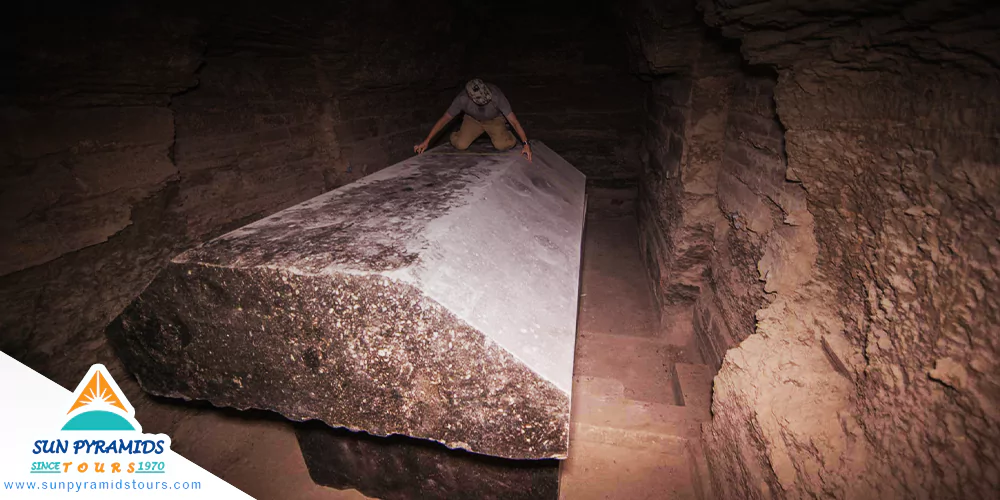
It only takes one journey with Sun Pyramids Tours to the mysterious Serapeum of Saqqara, home to the enigmatic sarcophagi of the Apis bulls, to be mesmerized by these colossal stone coffins, each weighing in at a staggering 70 tons, which are a testament to the architectural Superiority of the ancient Egyptians.
Carved from a single piece of granite and polished to a mirror finish, their creation remains a mystery that continues to baffle experts. The precision and scale of these sarcophagi underscore the reverence the Egyptians had for the Apis bulls, considered incarnations of the god Ptah. Join us as we delve into this fascinating chapter of Egypt’s rich history.
Canopic jar
Canopic jars, used in ancient Egypt's mummification process, stored and preserved the deceased's organs for the afterlife. Originating in the Old Kingdom, these sacred jars held specific organs, each protected by one of Horus's four sons. The jars evolved over time, from plain stone containers to intricately carved wooden ones, with lids depicting the guardians. Despite the term's incorrect origin from the legend of Menelaus and Canopus, scholars found no reason to change the term.
Creating these jars, especially from granite, was a complex task. The ancient Egyptians had to carve the hard stone into the desired shape, which required significant skill and time. The lids, often in the form of human heads or the sons of Horus, added to the complexity. Despite the challenges, these jars are a testament to the Egyptians' advanced craftsmanship and their deep reverence for the afterlife.
The Nubian Egg
The Nubian Egg, a remarkable artifact from ancient Egypt, has sparked considerable debate among historians and archaeologists. Discovered in a tomb near Aswan, the egg is adorned with etchings that depict three triangular structures, leading some to speculate that they represent the Pyramids of Giza. Intriguingly, the human remains in the same tomb were carbon-dated to be 7,000 years old, suggesting that the egg—and the structures it portrays—could predate the pyramids’ accepted age. While skeptics argue the etchings might depict the Nubian pyramids of Sudan or other symbols, the egg’s true significance remains a captivating mystery, emblematic of Egypt’s rich and enigmatic history.
The Sabu Disk
An enigmatic artifact housed in the Egyptian Museum in Cairo, continues to puzzle scholars and visitors alike. Discovered in 1936 in the tomb of the ancient Egyptian official Sabu, this artifact dates back to the First Dynasty, around 3000 to 2800 BC.
Crafted from schist, a weakly metamorphic siltstone, it presents a complex design that challenges our understanding of ancient Egyptian craftsmanship.
The disk, resembling a steering wheel with three wide spokes, is a marvel of precision, especially considering the hardness of the granite from which it was carved.
Its purpose remains a mystery, with theories ranging from a ceremonial vessel to an advanced technological device. The Sabu Disk stands as a testament to the ingenuity and skill of ancient Egyptian artisans, a riddle carved in stone that continues to intrigue us.
The Statue Of Khafre
Glorified in the middle of the Egyptian Museum, the statue of Khafre is a silent verse to the extraordinary artistry of ancient Egypt. Carved from the stubborn diorite, this statue breathes life into Khafre, the Fourth Dynasty Pharaoh, who sits majestically on a throne etched with emblems of sovereignty.
Its unique allure is so captivating that it has been immortalized in the Egyptian currency. It serves as a daily reminder of the country's rich heritage and the timeless grandeur of its ancient civilization.
Every detail of the statue of Khafre, from the regal headdress and the ceremonial false beard to the guardian falcon-god Horus perched protectively behind Khafre's head, echoes the divine aura of the king. The creation of this statue was a monumental task, requiring immense skill to translate intricate ideological concepts into a tangible masterpiece. This statue, a beacon of terrestrial and celestial authority, continues to mesmerize as a timeless piece of ancient Egyptian artistry.
Ancient Egyptian Artifacts
-
An amulet is a mystical or wondrous item, typically taking the form of a ring, necklace, or bracelet, which is worn by individuals who believe in its magical or miraculous ability to safeguard the wearer.
-
The symbol of life, known as the "Ankh," is entrusted to the gods and goddesses of ancient Egypt, who bestowed it upon kings, queens, and the people of Egypt.
-
The Benben, also called the pyramidion, rests atop the Egyptian pyramid at its highest point.
-
The canopic chest is a specific kind of container. Within it, the four Canopic jars are housed together.
-
Cartonnage refers to a composite material comprising papyrus or linen saturated in plaster, molded around the body of the deceased for mummification, coffin construction, and various ceremonial functions.
-
A cenotaph is a memorial structure or an empty tomb erected in honor of an individual or a collective whose remains are situated elsewhere.
-
The crook symbolizes Pharaonic authority and serves as an embodiment of Osiris, the deity governing the Egyptian underworld in mythology.
-
Faience is a form of glasswork encompassing items like amulets and various ornaments.
-
A fake door is a creative depiction of a doorway, commonly found in tomb architecture, serving as a decorative element.
-
The flail represents Pharaonic power and the dominion of Osiris, ruler of the underworld, and is discovered within the tomb of Ramses II.
-
During the Naqada period through the conclusion of the Early Dynastic Period, a common funerary item was the Flint Knife.
-
The funeral cone, a small clay cone, was traditionally positioned at the entrance of tomb chapels, predominantly in the Theban necropolis.
-
The Imiut Fetish, a religious artifact utilized in funerary rites, comprises stuffed animal skin, often from a feline or a bull, devoid of its head and affixed to an upright pole ending in a lotus flower, inserted into a stand. Despite its use, the exact origin and purpose of the Imiut Fetish remain shrouded in mystery.
-
A microlith is a small fragment of stone from ancient Egypt.
-
part from being worn as a necklace, the Menat also serves as a musical instrument, particularly functioning as a metal rattle.
-
A naos is a sacred shrine, specifically designed as a portable sanctuary for transporting a deity.
-
ostracon is a fragment of pottery or limestone used as a writing surface in ancient times.
-
A cosmetic palette is a stone slab employed for the formulation of cosmetics, which could be adorned or plain.
-
Papyrus is a material crafted from the papyrus plant, traditionally utilized as a medium for writing and painting for millennia.
-
The Saqqara Bird is a wooden bird model.
-
The sarcophagus is a stone-carved burial container for a deceased individual, commonly used for interment.
-
The Egyptian scarab is a widely favored amulet or seal fashioned in the form of an abstract dung beetle, highly esteemed in Egypt.
-
Senet is a well-liked board game that has endured through the ages.
-
Ushabti figures, placed in tombs as replacements for the deceased in the afterlife, are known as Shabti in Arabic.
-
The Great Sphinx is a limestone statue that stands as the solitary guardian of Egypt.
-
The Pyramids are colossal structures with square or triangular bases and sloping sides, tapering to a point at the top, constructed from limestone as royal tombs in ancient Egypt. They also held the esteemed status of Egypt's emblem for countless generations throughout their construction and utilization.
-
In archaeology, a stele is a stone or wooden slab, available in various shapes and sizes, often engraved with texts, reliefs, or artwork. There exist two main types of stele: Boundary Memorial Stele and Monumental Stele.
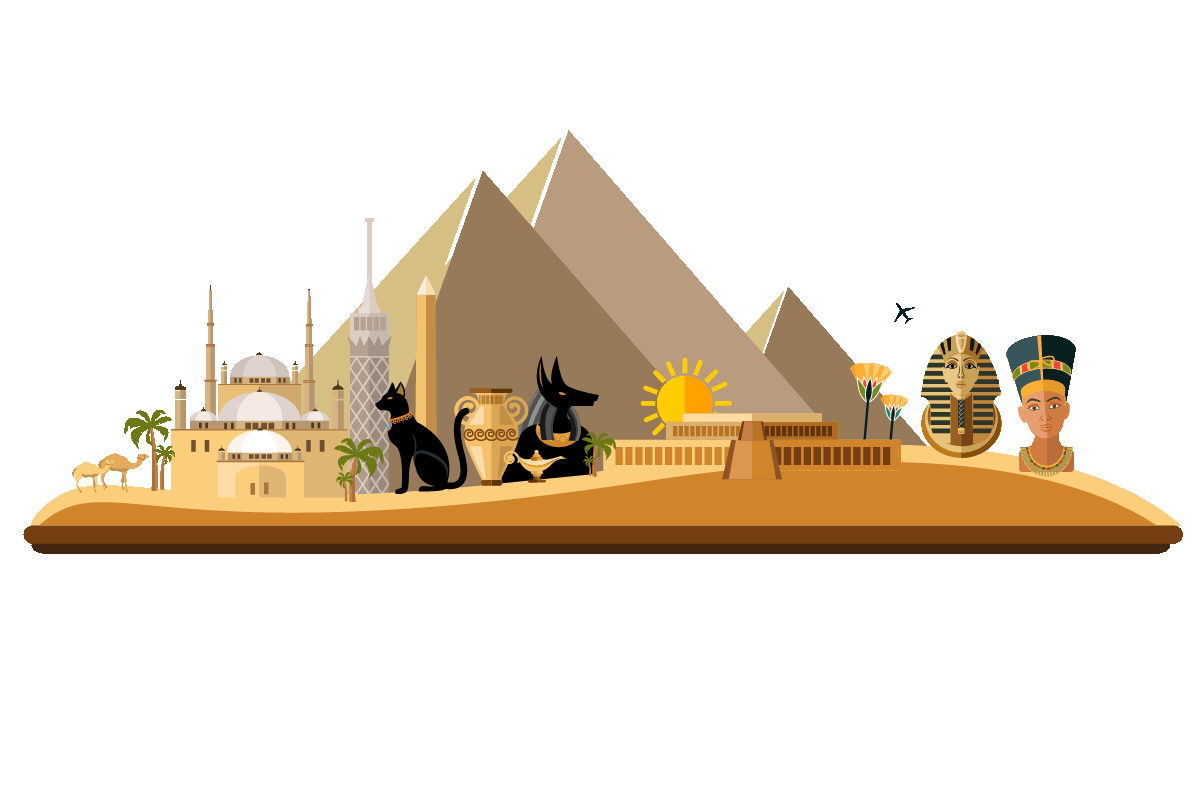
.DvizhAGb.gif)
Plan your next adventure now
Related Tours
Frequently Asked Questions
See more

There are no frequently asked questions :)
Related Blogs
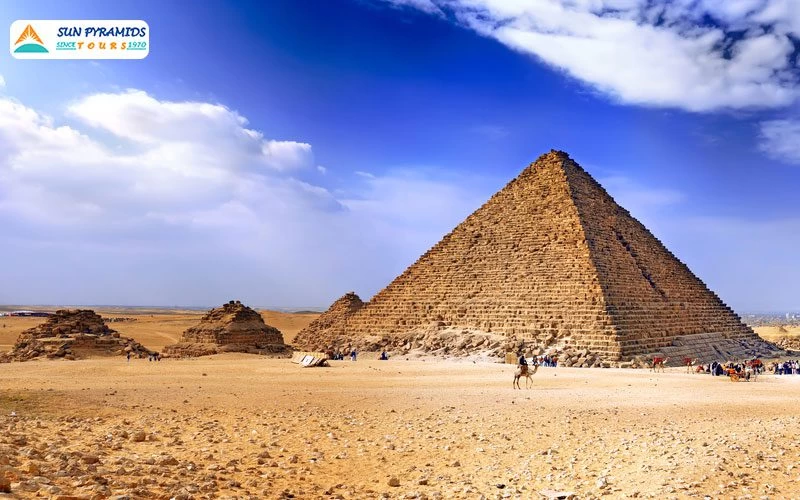
Plan A Trip to Egypt
+1 more
Ultimate Guide: How To Plan A Trip To Egypt

Christmas and New Year in Egypt
+1 more
Christmas and New Year in Egypt

Egypt Hidden Gems
+1 more
Egypt Hidden Gems

Abu Simbel Temple
+1 more
Abu Simbel Temple
Need help to Finding your Trip?
Offers
Make Trip
trips
Home
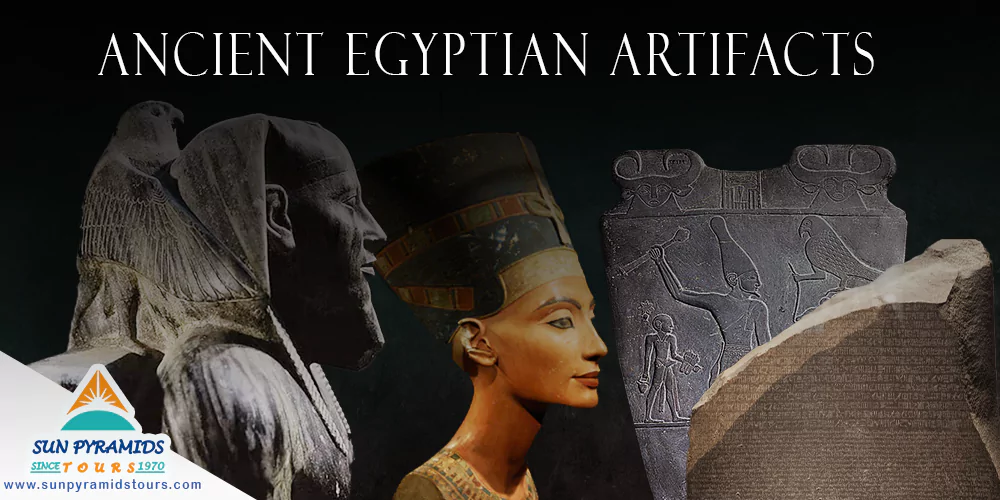

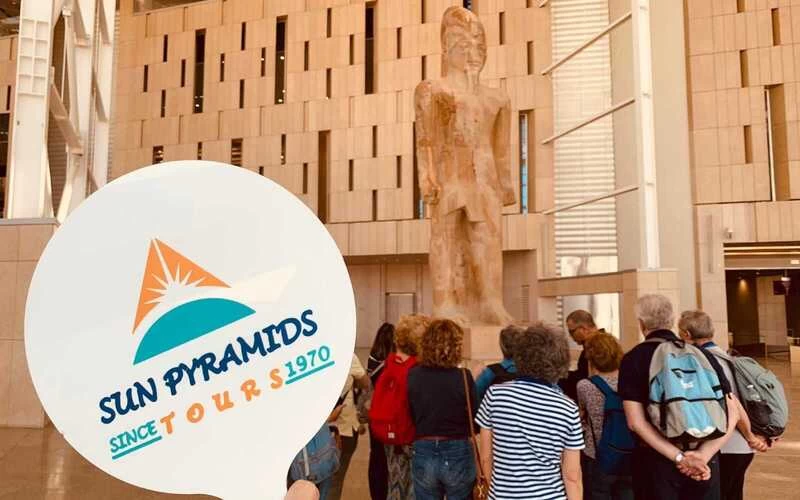

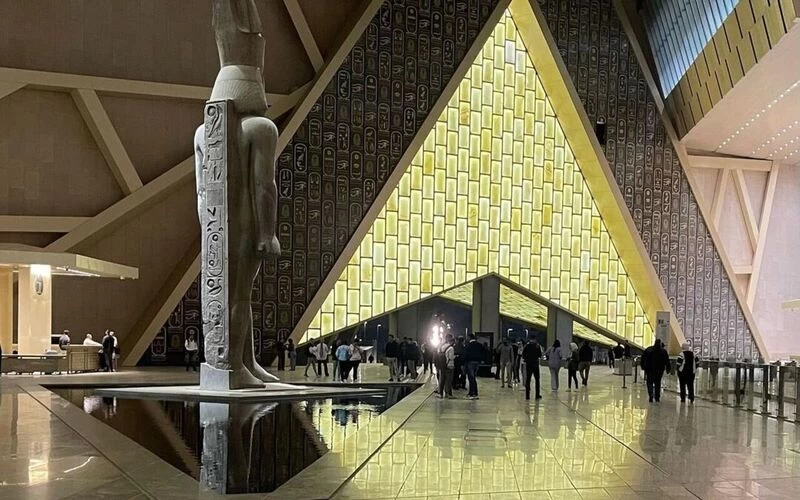
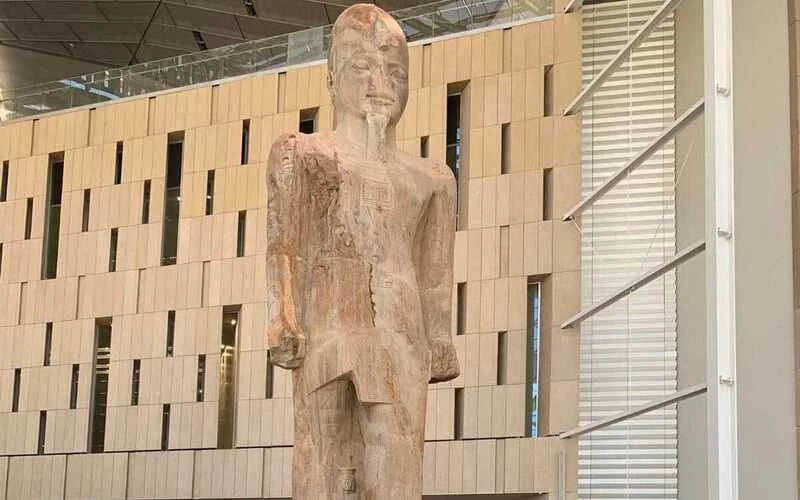

.webp)
.webp)
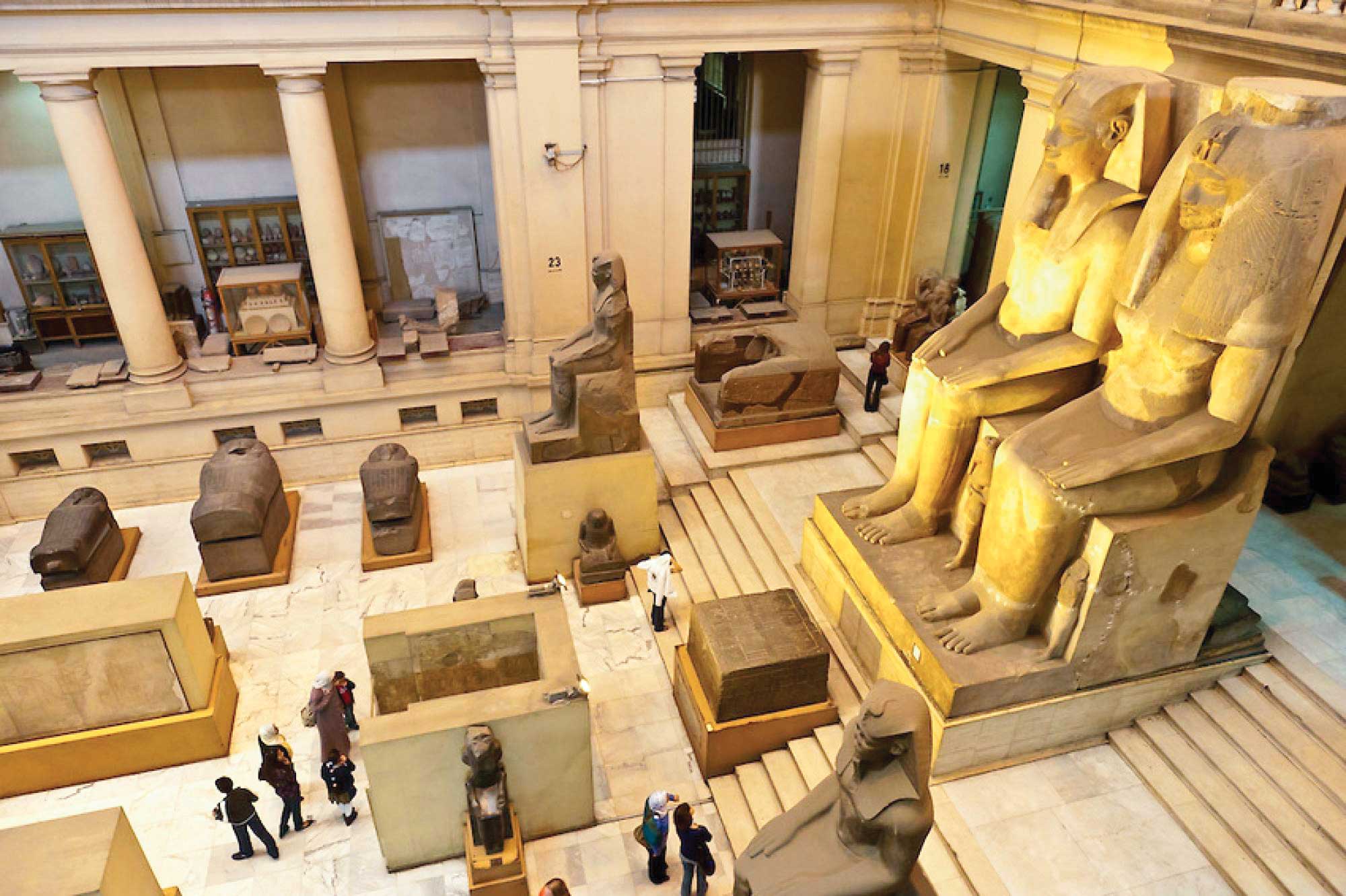
.webp)
.webp)
.webp)
.jpg)


.webp)
.webp)

